


Improving balance should not be the goal of athletes alone, it's a secret weapon for staying strong, safe and to gain more freedom in your everyday life. A stable posture depends on muscular strength, sensory signals (auditory, visual and proprioceptive) and neurological control. There are several balance and fall prevention strategies that can be looked into. However, let’s look at 10 powerful exercises, designed with a gradual progression from beginner to advanced to support improved balance, posture control and physical confidence.
Well suited for newcomers to balance work, especially for older adults and those recovering from injuries. Here, you have to be seated on a stable chair with your feet hip-width apart. Stand up slowly without hand support and come back to sitting with control. Repeat 7-8 times and once you feel stronger and confident try doing it with your hands crossed.
How it helps: This helps build lower body strength and dynamic movement patterns – greater ease in everyday life.
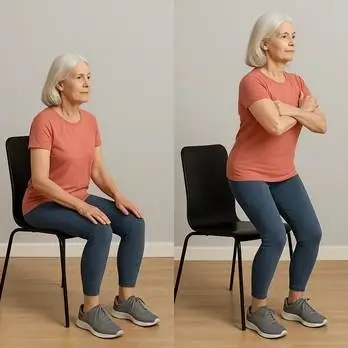
A person’s balance deeply relies on visual cues and inner ear feedback. While standing gently, shift your gaze in multiple directions and tilt your head forward and backward and then side-to-side to engage your visual and vestibular systems. Practice this drill near a stable surface like a wall or a chair – suppose you feel unstable.
How it helps: It strengthens your balance by activating your neck and visual coordination.

Placing one foot directly in front of the other as you walk enhances postural control, engaging the balance system of the body more intensively. Moving slowly and mindfully through step-ups on a stair or a curb help your body to prepare for everyday movements. These simple movements represent daily life actions where we feel insecure like climbing stairs. Let’s see how we can practice these movements.
Walk 10-15, slow, heel-to-toe steps in a straight line. If needed, use your arms to balance. Locate a curb or a stair and step up one foot at a time and then step down with control. Make sure you repeat a minimum of 5-10 times per leg.
How it helps: This practice boosts lower body strength, improves balance and builds confidence in everyday movements where we normally feel insecure.
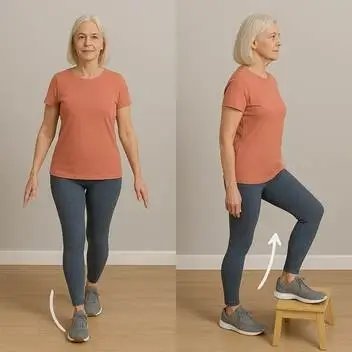
Position yourself near a wall or a chair for support and raise one foot slightly, a few centimeters, off the ground. Hold the position for 30 seconds and practice this with both legs. Once you feel confident, try doing the same set with your eyes closed or reaching an arm out.
How it helps: Encourages even strength and balance, highlights your imbalances and helps you work towards better symmetry.
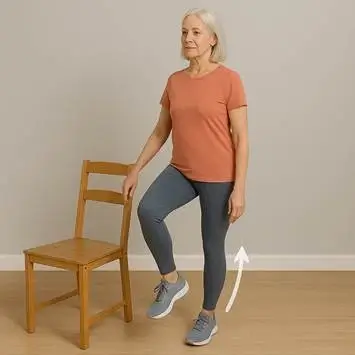
Here, to challenge your balance, reduce your base of support by positioning your feet closer together. You can also try tandem walking by placing one foot directly in front of the other in a straight line, which helps in awakening your balance system.
How it helps: This exercise trains the body to develop balance control in dynamic situations, not just while standing but also during more complex motion. Hence, you feel more grounded while moving with intention and control.
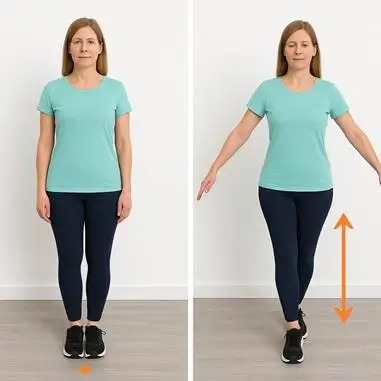
Exercises performed on one leg such as single-leg squats, deadlifts and hip thrusts challenge your balance while engaging your core muscle group like core, glutes and stabilizers. A smaller base and an uneven load will demand your body to work harder pushing your balance system to adapt and grow stronger.
How it helps: It helps in building strength and balance creating better functional control.
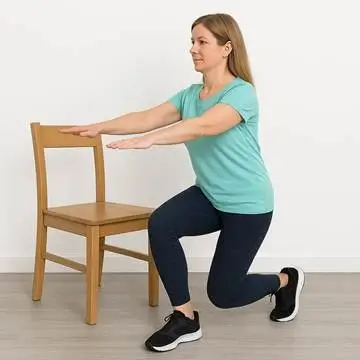
Practicing lunge variations, whether reverse, forward or walking, improves balance by engaging your body in multiple planes of motion. It is advisable to use a wall support, especially for beginners, whereas advanced individuals can add weight such as dumbbells.
How it helps: It stimulates everyday stepping movements like stepping into a car or climbing stairs, boosting leg power and dynamic control.

Your core and spinal control are crucial in maintaining balance. Holding a resistance band and resisting its pull awakens your core and spinal stabilizing muscles. Position yourself perpendicular to the resistance band anchor point. Now hold the handle with both hands, arms straight out. Until the band is tight, step back. Engage your core and resist any rotation through your body. Complete at least 12 reps per side.
How it helps: It enhances core and spinal strength, enabling balanced and secure motion, and reduces the risk of falls or injury.
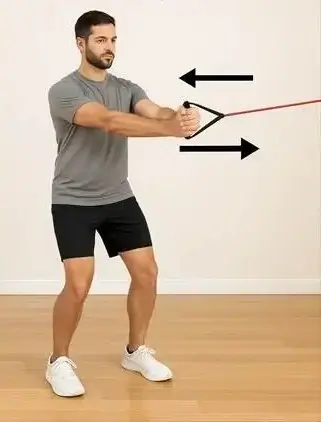
Use of suspension straps induces the effect of instability. This encourages your core and limbs to work in coordination, especially while engaging in movements like pulling, leaning and shifting.
How it helps: It combines muscular strength, coordinated motion and balance in multidirectional planes. It's a perfect drill for individuals aiming for more than static exercises.

Those who are looking for more advanced drills, can choose unstable surfaces such as a BOSU ball, balance pad or a wobble board. Benign with balancing one leg at a time for 20-30 seconds. Once you become confident, add dynamic moments such as keen bend or reaching with your arms.
How it helps: Enhances balance by engaging the sensory systems to work in harmony, contributing the coordination of feet, ankles and eyes which help in balance.

Age-related changes in muscle strength is common to all. Balance deteriorates with age due to decline in muscle strength, reduction of reaction time, less reliability on sensory input. With limited balance, the risk of falls and resultant injuries are always high. Hence, balance training keeps your body stable, quick and strong. Engaging in such simple exercises will help you remain confident in everyday activities such as climbing stairs, navigating curbs and also enhances your reaction time, preventing falls.